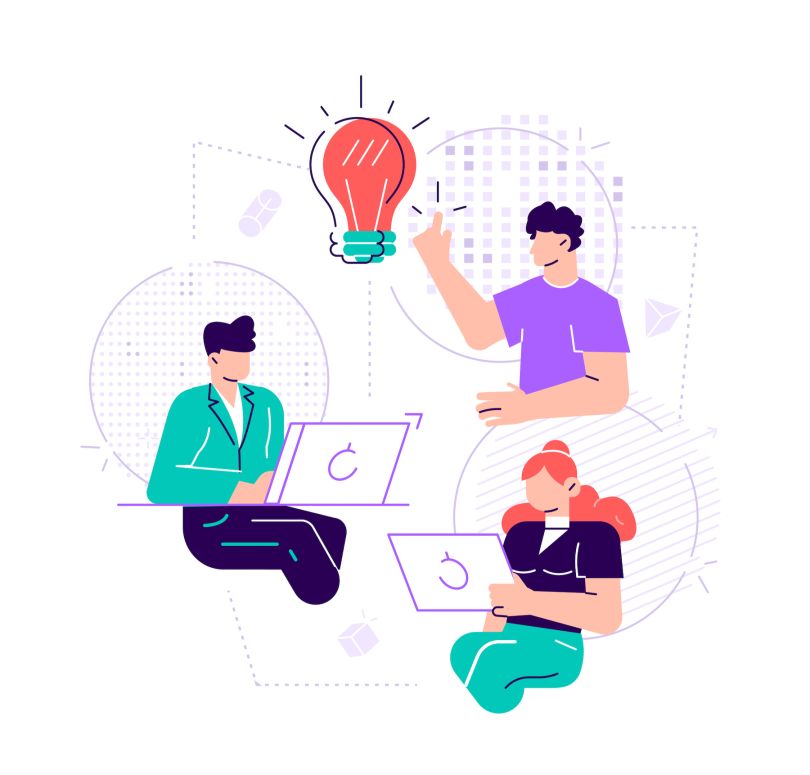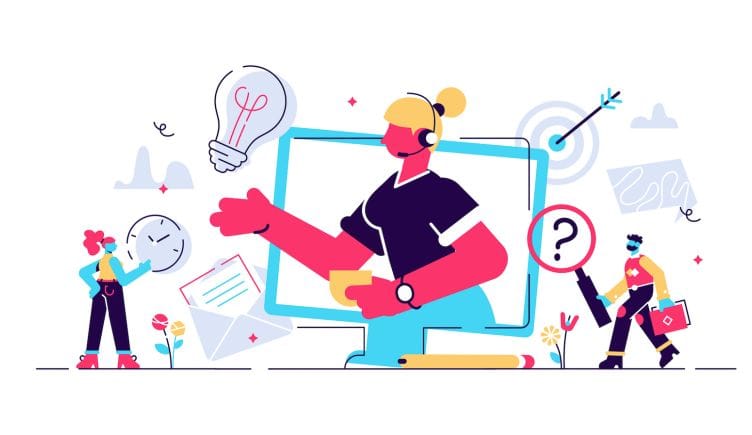In customer success, the “law of gravity” dictates that the moment a customer signs on the dotted line, they start gravitating toward churn.
The reason for this precipitous drop in satisfaction is that customers want to see value from the product quickly, and then they crave more, said Mark Fordham, CareerArc’s senior VP of client success. It’s on the client success team to keep the customer on a trajectory toward renewal, and that starts with an effective customer onboarding process.
“We like to consider ourselves as the guardians of value,” Fordham said.
Within three weeks, his team strives to teach a new customer the basics of the platform, help them post their first job through its platform and map out future objectives for the client to accomplish.
It’s a tricky exchange to get right. Let the customer dictate too much of the onboarding, and it’s difficult to know whether they truly understand how the product works or just how to do one task. Overload them with information, and the customer becomes overwhelmed.
Doing it right requires a seamless handoff from sales to customer success — a value-based approach and lots of data.
Customer Onboarding 101
- Develop a seamless handoff process. The sales rep should provide detailed notes to the customer success manager.
- Tie your sales team’s goals to the success of your customers. CSMs and sales teams need to be on the same page.
- Conduct a post-sale discovery call. Use it to set goals for the upcoming year.
- Generate quick wins. Short-term value leads to long-term adoption.
- Gather data and constantly evaluate your processes.

Create a Clear Handoff Process From Sales to Customer Success
Before ActiveCampaign established its current customer onboarding process, nobody really knew whether a customer had been fully onboarded or not.
Like most startups, it began with an ad hoc approach. The sales team would do its best to run demos, coach the customer and answer any questions they had about the product. If they didn’t hear back, the assumption was that the customer knew what they were doing, said Kallie McConkie, the marketing software company’s director of customer success.
As the company brought on additional account managers and customer success managers, the onboarding calls would be forwarded to those teams. Still, there was no consistency in the handoff, or what the customer was hearing about the product from each point of contact.
The result: higher churn rates, and fewer upsells.
“We knew that a lot of our customers would come on at a low-cost plan and would stay there because they didn’t know what else they could do,” McConkie said. “By having an onboarding process and consultative conversations, we’ve been able to uncover some of those opportunities.”
McConkie and her team have a formalized process now. It starts with the sales team uploading all relevant notes they have about the customer into a document in its CRM to hand off to a customer success manager. The notes include why the customer is buying ActiveCampaign, whether they came from another email marketing platform and what their goals are.
“We knew that a lot of our customers would come on at a low-cost plan and would stay there because they didn’t know what else they could do.”
Those three details help the customer success manager gauge the complexity of the user and what they need to do during the onboarding to help the customer get a few quick wins, McConkie said. For larger customers, the account executive and customer success manager will join a call with the customer to complete a proper handoff.
A smooth transition isn’t always a guarantee, however. If a sales team isn’t trained or incentivized to bring on the right customers, it can derail the onboarding before it even begins.
To circumvent this, ActiveCampaign ties part of its sales team’s commission to successful onboarding. A sales rep won’t receive a commission if the customer leaves ActiveCampaign within anywhere from the first 90 days to 12 months, depending on the company size. However, if the customer is upsold, the sales rep’s commission is increased as well.
“If we have some concerns during the first few months with the customer, we’ll pull the sales rep back in,” McConkie said. “The two teams work really well together.”
Structure Product Tutorials Around Creating Value
There’s a tendency in customer success to believe that a happy customer means a job well done.
But that’s not always the case — especially when it comes to onboarding. Rather than telling the customer what they want to know about the product and sending them on their way, it’s important to uncover what they need to know and help them achieve that value first, Fordham said.
“You can treat your customer very well, but if you’re not helping them solve their business problems, you haven’t done your job,” Fordham said.
“You can treat your customer very well, but if you’re not helping them solve their business problems, you haven’t done your job.”
That’s why CareerArc’s client success managers spend those early conversations with the customer doing a post-sale discovery.
They’ll ask what challenges the company is having with hiring, what its cost-per-hire is and how it’s managing its recruitment pipeline. This helps the client success manager identify at least five additional long-term goals for the customer, and it helps them create a custom onboarding plan. Since CareerArc’s software can be complex, the context-based approach makes it easier to digest the information, Fordham said.
“We let them lead with their own voice and priorities, and then we back our way into how the platform satisfies that,” Fordham said.
ActiveCampaign also conducts a highly customized tutorial for its enterprise customers, but that process doesn’t scale for lower-spend clients. For its larger swath of small-to-midsize customers, the company hosts a live, three-day onboarding webinar with a customer success manager on hand to answer questions. About 50 customers join those calls each week.
The videos are intentionally designed to teach customers how to get the most value out of ActiveCampaign.
It starts with the basics of marketing and understanding the buyer persona and journey. Then, it goes into how to generate leads and build customer lists from the CRM. On the final day, tutorials go into more sophisticated features like building email campaigns and automation.
“It’s all about setting up their accounts to be used in what we believe to be the most effective way,” McConkie said. “We focus on building out the platform to be something where, if you were out sick, somebody on your team could log on and understand what you were doing. Or if you bring on someone new, it’s not going to take you months to train them. We know that’s essential to a customer being successful long term.”

Rack Up Early Wins to Build Momentum
There are three keys to successful onboarding, Fordham said: speed, value and satisfaction. A customer needs to experience success with the product, it needs to be in the areas that they value and it needs to happen within the first month.
If any of those three categories are off, it can lead to an unhappy customer, no matter how excited they were for the product.
That’s why it’s important to rack up quick wins as early as possible in the onboarding. Fordham’s team tries to hit at least one goal within the first three weeks of onboarding. Often, the first goal is to post jobs on social media. The three-week timeline gives the customer enough time to gather the materials, learn the platform and put together a meaningful social media strategy, Fordham said.
When done right, it bonds the customer to the product, and the product starts to integrate into their workflow.
“Once you start to see the jobs out on social media and you know the platform is doing it, it becomes a celebratory moment,” Fordham said. “We want to get to that moment as quickly as possible, because they’ll share that with their constituents, and if it’s done right, there’s a moment of pride for our customers.”
Fordham’s team tries to create two or three of those celebration moments before it considers a customer minimally onboarded. At that point, the customer will have been introduced to enough features and will start to have enough data on hand to measure the product’s success.
Of course, there are occasional roadblocks that can halt the momentum of an onboarding. A customer may just not have the time to engage with the tool, or they could be waiting on another team for approval to take the next step.
In those cases, it’s on the customer success representative to solve that problem and keep the momentum going, Fordham said. That may mean bringing back a salesperson to figure out why the customer is hesitating or creating marketing materials for them to circumvent the roadblock.
“We’re just trying to walk ourselves around whatever we can’t move, or whatever they can’t move, and find another path,” Fordham said.

Collect Data to Measure Onboarding Success
It can be difficult to know whether a customer onboarding is successful or not. Just because it’s been a positive experience doesn’t mean there won’t be hiccups down the line that could’ve been avoided.
Like with anything else in tech, the best approaches are backed by data. The more data a customer success team can gather, the better it can fine-tune the onboarding process.
CareerArc tracks time to first value, onboarding velocity, client engagement and client satisfaction surveys, as well as Net Promoter Score. Time to first value helps the company track how long it takes for the customer to see a return on investment for its purchase and gives the team a unified definition of what it means to be onboarded.
Onboarding velocity helps customer success teams map out their process benchmarks and identify situations where a customer or the training stalls. Meanwhile, the company peppers its client satisfaction survey with questions like, “Tell us where we let you down,” to make sure it gets an honest assessment of its services.
“We’ve uncovered problems in our integration process and tools we were lacking,” Fordham said. “It turned out that we were doing too much manual work back and forth. We ended up creating a tool to make it easier for customers to tell us how to get their jobs.”
“If you have any hope of scaling, you have to have things structured in the way you’re going to measure it.”
Ultimately, a smooth onboarding sets the tone for a successful customer relationship. It can lead to upselling opportunities and uncover obstacles that the salesperson might have missed. But it’s also a nuanced process that requires balancing time, value and satisfaction. You can’t buy happiness, but you can track it.
“If you have any hope of scaling, you have to have things structured in the way you’re going to measure it,” Fordham said. “Otherwise you guarantee the occasional rogue CSM or an erosion of a certain segment of your business that you can’t tell until it’s too late.”


